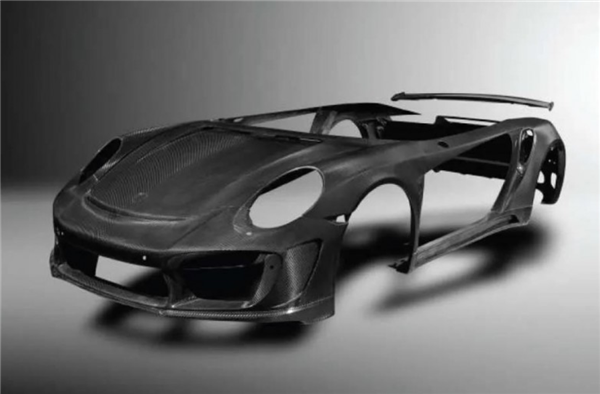1 May, 2020 By Johny 2 Comments
Inventory(5)–the hotspot of global advanced fiber composite research and development in year 2019
China:
In recent years, China has made breakthrough developments in key technologies, industrialization, equipment and market applications in the high-performance fiber and composite materials industry, and is gradually developing into a major producer and consumer of high-performance fibers and composite materials. At present, China has a complete range of high-performance fibers and composite materials. The production scale of a few varieties such as ultra-high molecular weight polyethylene, meta-aramid, basalt and polyimide fibers has reached international level.
Domestic carbon fiber research is mainly concentrated on the T series, that is, high-strength carbon fiber. At present, the performance of domestically produced T300 grade carbon fiber has been synchronized with the international level. T700 grade carbon fiber has achieved large-scale production and large-scale application of high-performance structural materials. It has just been put into production in 2004, and Japan has already realized the production of T1000 grade carbon fiber as early as 1986. Domestic carbon fiber companies, led by Zhongfu Shenying Carbon Fiber Co., Ltd., have been working hard to improve domestic carbon fiber technology. On October 29, 2019, the “QZ6026 (T1000 grade) ultra-high-strength carbon fiber 100-ton engineering key technology” led by Zhongfu Shenying and jointly undertaken by Donghua University and Jiangsu Xinyingyou Machinery Co., Ltd. successfully passed the technology Appraisal, the first in China to realize the engineering of dry-jet wet spinning T1000 ultra-high-strength carbon fiber, in the future can provide high-performance fiber materials for more domestic advanced weapons and equipment.
At present, the application market of carbon fiber composite materials in China is mostly concentrated in the low-end field of sports and leisure. With the continuous breakthrough of domestic carbon fiber and composite material production technology, the application field of carbon fiber composite materials is also expanding.
On December 13, 2019, the world’s first full-line UHV project using carbon fiber composite core conductors was officially put into operation in Inner Mongolia. The total length of this project line is 14.6km. Compared with the traditional steel core wire, the carbon fiber composite core wire has the advantages of light weight, high strength, good safety, high conductor conductivity, and small transmission loss. The operation of this line can not only save energy, reduce operating costs, but also increase the transmission power of 1.32 million kW / h per year to alleviate the problem of power shortage.

In the automotive field, on March 20, 2019, China’s first passenger car with a hydrogen-powered carbon fiber body was successfully developed in “Optical Valley of China” (Figure 10). Above 1000km, carbon fiber material is used throughout the body to make the body structure lighter and stronger, and the car more lightweight. The car is expected to be launched in first-tier cities in China in 2020.
In recent years, UAV systems have become more and more widely used, and have developed into the most dynamic development field of the aviation industry. The application of carbon fiber composite materials in the field of drones has also become a new bright spot in the development of high-performance fiber composite materials. On December 6, 2019, Weihai Guangwei Composites Co., Ltd. delivered the first AV500B / C UAV (Figure 11) to the Aviation Industry Helicopter Design and Research Institute. Parts), integral fuel tank load-bearing structure, tail beam overall structure and laminates, closed cavity structural parts and other parts, using a large number of carbon fiber composite materials independently developed by Guangwei Composites, greatly improving the cruising ability of the drone And mobility flexibility. This series of drones are mainly used in the military market, and can also be used in other civilian fields through modification, which has huge market potential.

In order to further expand the application of domestic carbon fiber composite materials in more high-end and key fields, it is essential to improve the localization ability of high-quality carbon fiber products, especially the PAN-based carbon fiber with the most widely used range. There are still many problems in domestic production technology. The improvement of carbon fiber quality still needs to be refined and optimized. Chinese researchers have conducted in-depth research and analysis on these issues. In terms of polymerization, the application of continuous polymerization process should be promoted. At present, domestic PAN carbon fiber manufacturers mostly use intermittent or semi-continuous polymerization processes. In fact, for any process, the continuous process is undoubtedly more stable and easy to control, which is conducive to improving the stability of the PAN-based carbon fiber spinning solution, and ultimately improves the quality of the PAN-based carbon fiber and reduces its various performance indicators The discrete coefficient (CV value);
In the preparation process of PAN-based carbon fiber strands, reasonable coagulation conditions can regulate the phase separation process of the PAN spinning solution, and thus control the formation of nicks in the strands, which is conducive to improving the quality of carbon fibers. In the preparation process of PAN raw silk, the drying and densification process is another important step that can regulate the micro-defect structure in the raw silk. Reasonable tension, temperature and humidity can effectively plasticize the PAN molecular chain, promote the fusion of the micropore structure formed by the PAN-based carbon fiber strands during the phase separation process, reduce the micro defects in the PAN strands, improve the performance of the strands, and ultimately Improve the quality of PAN-based carbon fiber.
In the research of the correlation between the structure and performance of PAN-based carbon fibers, researchers have found that for PAN-based carbon fibers with a modulus greater than 350GPa, the increase in the degree of graphitization has little effect on the increase in modulus, but mainly comes from the graphite in the graphite crystals in carbon fiber. The regular arrangement of the sheets and the increase in the size of the graphite crystals and the increase in the orientation of the graphite crystals; for the strength of the PAN-based carbon fiber, the entanglement between the graphite crystals and the shortcomings between the graphite sheets can effectively make the carbon fiber The stress is dispersed during the stretching process, thereby improving the strength of the carbon fiber. In addition, any defect structure in the carbon fiber, including micropores, sheath-core structure, etc., will lead to a decrease in carbon fiber performance. The ideal PAN-based carbon fiber structure should be uniform to minimize defects such as sheath-core structure.
In addition to the important research progress in the field of carbon fiber, domestic research in other high-performance fibers and composite materials has also made many breakthroughs in key technologies. On March 29, 2019, Sichuan Fiberglass Group Co., Ltd., Sichuan University and Southwest University of Science and Technology jointly developed the continuous basalt fiber unit kiln production technology, and put into operation the first 8000t annual output with complete independent intellectual property rights in China. Continuous basalt fiber kiln drawing pilot production line. The production line has successfully produced continuous basalt fiber with multiple specifications of 9-17 μm, which has reduced production costs by more than 20% compared with the traditional crucible process, laying a technical foundation for the development of domestic continuous basalt fiber. On November 23, 2019, the localized para-aramid jointly developed by the Inner Mongolia Graphene Material Research Institute and Tsinghua University successfully completed the para-aramid production line with an annual output of 100 tons after more than three months of commissioning and operation. It broke the foreign monopoly on aramid technology and accelerated the industrialization process of domestic para-aramid.
As a new type of nano-polymer material developed in recent years, aramid nano fibers (ANFs) have the dual advantages of para-aramid fiber (PPTA) and polymer nano-fiber, which can solve the surface inertness of aramid fiber. Strong, weak interface strength and other issues. However, the traditional preparation methods of ANFs have problems such as long cycle time (7d), low reaction concentration (0.2%), and low reaction efficiency, which seriously disturb the large-scale application and development of ANFs. In order to solve this problem, Zhang Meiyun’s team at Shaanxi University of Science and Technology used fibrillation / ultrasound / proton donor coupled deprotonation to prepare ANFs, which shortened the preparation cycle of ANFs from the traditional 7d to 4h. The prepared ANFs have a small diameter and scale Distribution (10.7 ± 1.0) nm, also explored the preparation of high-concentration ANFs, can produce 4.0% high-concentration ANFs within 12h, and the film formation has excellent mechanical properties and thermal stability. The ANFs proposed in this study are highly efficient The preparation method is simple in process and excellent in performance, and is expected to further promote its large-scale production and industrial application
The research on high-performance fiber and composite materials in China started late, and the production, learning, research, and use are out of touch. There is a clear gap in the high-end field of independent innovation capabilities compared with developed countries. However, with continued investment in policy support and technological innovation, China ’s independent research and development and industrialization of key technologies for high-performance fibers and composite materials will achieve a breakthrough in linkage, and it is expected to gradually break the monopoly of foreign technologies and realize the localization of advanced fiber materials in high-end fields .
High-performance fiber composite materials have broad development prospects in aerospace, rail transportation, automobiles, construction, wind energy, ships and other fields. In 2019, all countries in the world have made great achievements in the field of high-performance fiber composite materials. The United States has focused on the development of functional advanced fiber new materials for military and aerospace fields; Japan ’s three major carbon fiber suppliers have achieved breakthrough research progress in the entire industrial chain of fiber raw materials, fiber prepregs and composite materials products; European major In-depth research has been conducted in the field of high-performance fiber materials for vehicles and ships; China mainly focuses on the key technological breakthroughs and market applications of high-performance fiber composite materials. At the same time, under the situation of global energy crisis and environmental pollution becoming more and more serious, countries have carried out research on the recycling of waste fiber composite materials, and achieved certain results.
With the continuous deepening of research on high-performance fiber composite materials and the continuous expansion of application fields, its market demand will show a rapid development trend. Countries around the world will seize this market opportunity to promote the sustainable development of high-performance fiber composite materials through innovation. The future development direction of the high-performance fiber and composite materials industry mainly includes: designing and researching and integrating structural and functional products around automotive, high-speed rail and other application fields; developing low-cost technology, integrated molding technology and intelligent processing systems; greening to promote high-performance fiber products Production, development, application and recycling.
At present, China’s high-performance fiber composites industry is at a critical stage of development. In order to meet the domestic strategic security of high-performance fiber composites and the growing market demand, the state focuses on supporting the technical research on advanced fiber composites used in high-end fields such as the defense industry Strengthening the industry’s macro guidance and promoting the green and coordinated development of the fiber industry, China is expected to become a high-performance fiber composite material industry power by 2025.
Sourcing from cnfrp.com

